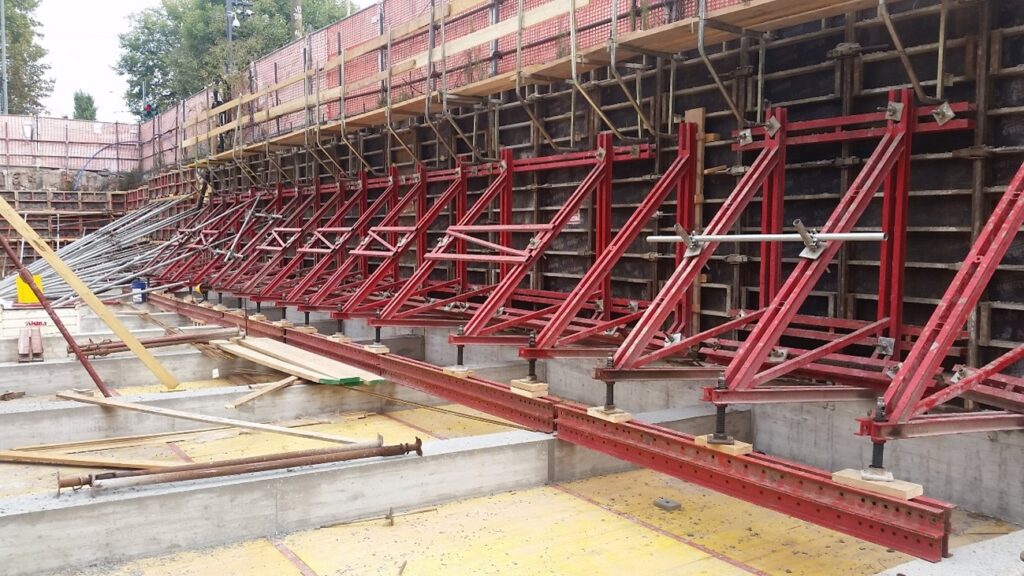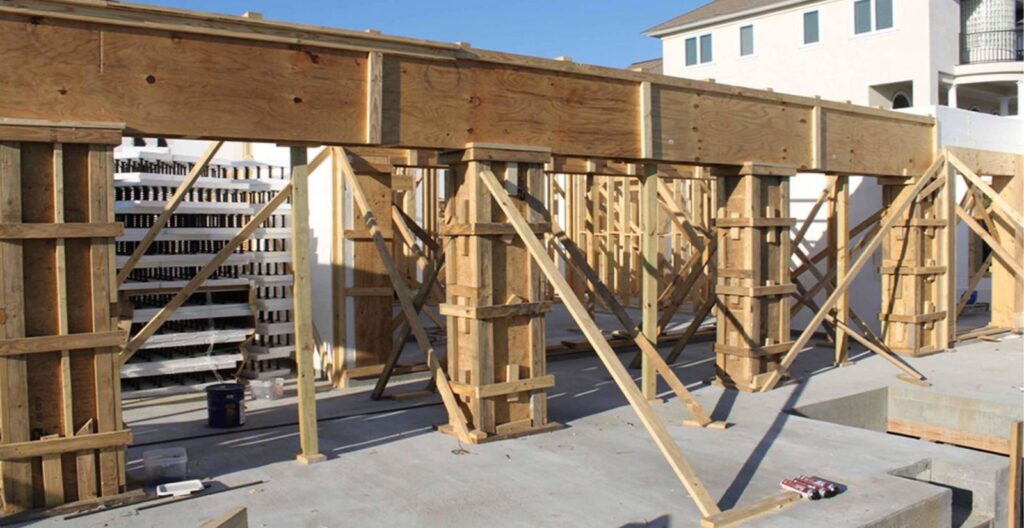Construction sites can be dangerous places if proper safety precautions are not followed. One area of concern is when working with formwork plywood. Understanding the basics of formwork plywood is essential to ensure safe practices are in place. Additionally, having the right safety equipment, knowing how to handle and store the plywood properly, and being aware of potential risks and hazards are all important aspects of maintaining a safe working environment. In this article, we will discuss these safety tips in detail.
Understanding the Basics of Formwork Plywood
Formwork plywood is a crucial component in construction projects, especially in concrete forming applications. The F17 plywood is specialized type of plywood is meticulously crafted to withstand the immense pressure and weight of wet concrete during the pouring and curing process. Its smooth surface not only aids in achieving a flawless finish on concrete structures but also plays a significant role in the overall quality and durability of the final product.
When it comes to selecting formwork plywood, quality is paramount. Plywood with a high number of defects, such as knots, voids, or delaminations, should be strictly avoided for formwork applications. These imperfections can weaken the plywood and compromise the integrity of the entire structure, posing safety risks and potentially leading to project delays and additional costs.
Formwork plywood is typically constructed from multiple layers of thin wood veneers that are carefully bonded together with strong adhesives. This layering technique not only enhances the plywood’s strength and durability but also ensures its flexibility, making it easier to bend and shape to the desired form. Additionally, the panels undergo special treatments to resist moisture and create a robust, long-lasting surface that can withstand the harsh conditions of construction sites.
See Also: Exploring the Timeless Allure of Chaise Sofas
Understanding these key characteristics and considerations of formwork plywood is essential for construction professionals and project managers alike. By prioritizing the quality and suitability of formwork plywood for each specific application, construction teams can ensure the safety, efficiency, and success of their projects.
Importance of Quality in Formwork Plywood
Quality is of utmost importance when it comes to formwork plywood. Using subpar plywood can lead to serious safety issues, such as structural failures or collapses. It is essential to source plywood from reputable suppliers who meet industry standards and regulations.
Quality plywood is less prone to warping, which ensures it maintains its shape and stability during concrete pouring. It also offers better strength, reducing the risk of breakage or bending under pressure. Prioritizing quality when selecting formwork plywood can help prevent accidents and ensure the structural integrity of the project.
Furthermore, high-quality formwork plywood is often manufactured using advanced techniques that enhance its durability and performance. Some manufacturers may utilize special treatments or coatings to improve the plywood’s resistance to moisture, mold, and other environmental factors. This added protection can prolong the lifespan of the plywood, making it a cost-effective choice in the long run.
In addition to safety and durability benefits, quality formwork plywood can also contribute to a smoother concrete finishing process. Plywood with consistent thickness and smooth surfaces can help achieve a more uniform concrete appearance, reducing the need for extensive finishing work and saving time on the construction site. Investing in top-notch formwork plywood is not just about meeting standards; it’s about optimizing the entire construction process for efficiency and quality results.
Essential Safety Equipment for Working with Formwork Plywood
Having the right safety equipment is paramount when working with formwork plywood. This not only protects individuals working on the site but also enhances overall project safety. Two key types of safety equipment to consider are personal protective equipment (PPE) and safety tools and devices.
Personal Protective Equipment (PPE)
Workers should always wear appropriate PPE when handling formwork plywood. This may include safety helmets, safety glasses or goggles, gloves, and safety boots. Helmets protect against falling objects, while safety glasses or goggles shield the eyes from flying debris. Gloves provide hand protection from splinters and sharp edges, and safety boots offer foot protection from heavy objects.
It is important to ensure PPE fits properly and is in good condition. Regular inspections and replacements should be conducted to guarantee maximum effectiveness. Workers should consistently wear PPE and be trained on its correct usage.
Safety Tools and Devices
In addition to PPE, safety tools and devices can further enhance safety when working with formwork plywood. These may include fall protection systems, such as harnesses and safety nets, to prevent falls from heights. Guardrails, edge protectors, and toe boards should also be installed to minimize the risk of falls.
Furthermore, using lifting and handling equipment, such as cranes and hoists, can greatly reduce the strain on workers and minimize the risk of injuries when moving heavy plywood panels. Employing vibration-reducing tools and devices can also help mitigate the potential health risks associated with prolonged exposure to vibration.
When it comes to personal protective equipment, it is crucial to choose the right gear for the job. For example, safety helmets should be made of high-quality materials that can withstand impact and provide adequate head protection. Additionally, safety glasses or goggles should have a snug fit and be made of shatterproof material to effectively shield the eyes from any potential hazards.

When it comes to safety tools and devices, it is important to consider the specific needs of the project. Fall protection systems, such as harnesses and safety nets, should be carefully selected based on the height and nature of the work being performed. Guardrails, edge protectors, and toe boards should be installed in accordance with industry standards to ensure maximum safety.
Furthermore, the use of lifting and handling equipment can greatly improve efficiency and safety on the worksite. Cranes and hoists can lift and transport heavy plywood panels with ease, reducing the risk of strain and injuries for workers. Vibration-reducing tools and devices, such as anti-vibration gloves and tools with built-in vibration dampening mechanisms, can help protect workers from the potential health risks associated with prolonged exposure to vibration.
By prioritizing the use of personal protective equipment and safety tools and devices, workers can significantly reduce the risk of accidents and injuries when working with formwork plywood. Remember, safety should always be the top priority on any construction site.
Safe Handling and Storage of Formwork Plywood
Proper handling and storage of formwork plywood is essential for maintaining a safe working environment. This involves understanding and implementing proper lifting techniques and following safe storage practices.
Formwork plywood is a crucial component in construction projects, providing temporary moulds for concrete structures. Ensuring the safe handling and storage of this material is paramount to the success and safety of the construction site.
Proper Lifting Techniques
When lifting formwork plywood, it is important to use proper lifting techniques to prevent strain or injury. Always assess the weight and size of the plywood before attempting to lift it. If the panel is too heavy, seek assistance or use lifting equipment.
Furthermore, it is advisable to inspect the plywood for any defects or damage before lifting to avoid accidents or structural failures. By checking for cracks, warping, or splintering, you can ensure the integrity of the material and maintain a safe working environment.
When manually lifting plywood, ensure a firm grip using both hands and lift with the legs, not the back. Keep the load close to the body to maintain balance and avoid overreaching or twisting motions. Regular breaks should be taken to prevent fatigue and strain.
Safe Storage Practices
Proper storage of formwork plywood helps prevent accidents on the construction site. Plywood should be stored in a dry, flat area free from moisture and direct sunlight. Stacking the panels evenly and securely reduces the risk of them falling and causing injuries.
Moreover, it is essential to consider the environmental conditions when storing plywood. Extreme temperatures or humidity can affect the integrity of the material, leading to potential hazards during construction. By storing plywood in a controlled environment, you can prolong its lifespan and maintain its structural strength.
Avoid stacking plywood too high to prevent it from toppling over. Additionally, storing plywood away from other materials, such as chemicals or sharp objects, eliminates the risk of damage or contamination. Regular inspections of stored plywood should be conducted to identify any signs of damage or deterioration.
Risk Factors and Potential Hazards
Working with formwork plywood involves certain risk factors and potential hazards that need to be identified and addressed to maintain a safe working environment.
Identifying Common Risks
Understanding the common risks associated with working with formwork plywood is crucial for preventing accidents. These risks may include falls from heights, improper handling leading to strains and injuries, and structural failures due to poor-quality plywood.
Other risks to consider are the potential danger of working in confined spaces and exposure to hazardous substances such as adhesives or coatings used in the plywood manufacturing process. Identifying these risks is the first step towards mitigating them effectively.

Mitigating Potential Hazards
Several measures can be taken to mitigate potential hazards when working with formwork plywood. Regular safety inspections should be conducted to identify any defective or damaged plywood and take corrective action. High-quality plywood should be sourced from trusted suppliers to minimize the risk of structural failures.
Workers should be trained in safe work practices, including safe lifting techniques, handling procedures, and the correct use of safety equipment. Implementing fall protection systems, such as guardrails and toe boards, can help prevent falls from heights. Adequate ventilation and proper personal hygiene practices should be followed when working with adhesives or coatings.
Safety Protocols and Procedures
Implementing safety protocols and procedures is essential for ensuring a safe working environment when dealing with formwork plywood. These protocols should include comprehensive safety measures and an emergency response plan.
Implementing Safety Measures
Effective safety measures should be implemented and strictly enforced on construction sites. This includes regular safety training for workers, frequent site inspections, and the provision of necessary safety equipment.
It is important to establish clear communication channels to promote safety awareness among all workers. Encouraging open discussions about safety concerns and providing a platform for reporting potential hazards enhances overall safety on the construction site.
Emergency Response Plan
Preparing an emergency response plan is vital to address unforeseen incidents or accidents. The plan should outline evacuation procedures, emergency contact details, and roles and responsibilities of designated emergency response personnel.
Regular drills and simulations should be conducted to ensure all workers are familiar with the emergency response plan. Periodic reviews and updates of the plan should also be conducted to incorporate any changes in site conditions or regulations.
Conclusion
When it comes to working with formwork plywood on construction sites, safety should always be the top priority. Understanding the basics of formwork plywood, prioritizing quality, using the right safety equipment, handling and storing the plywood properly, identifying potential risks and hazards, and implementing safety protocols and procedures are all crucial elements of maintaining a safe working environment.
By following these safety tips and ensuring compliance with industry standards and regulations, construction professionals can prevent accidents, injuries, and structural failures, ultimately creating a safer and more productive work environment. Remember, when it comes to safety, there is no room for compromise.

